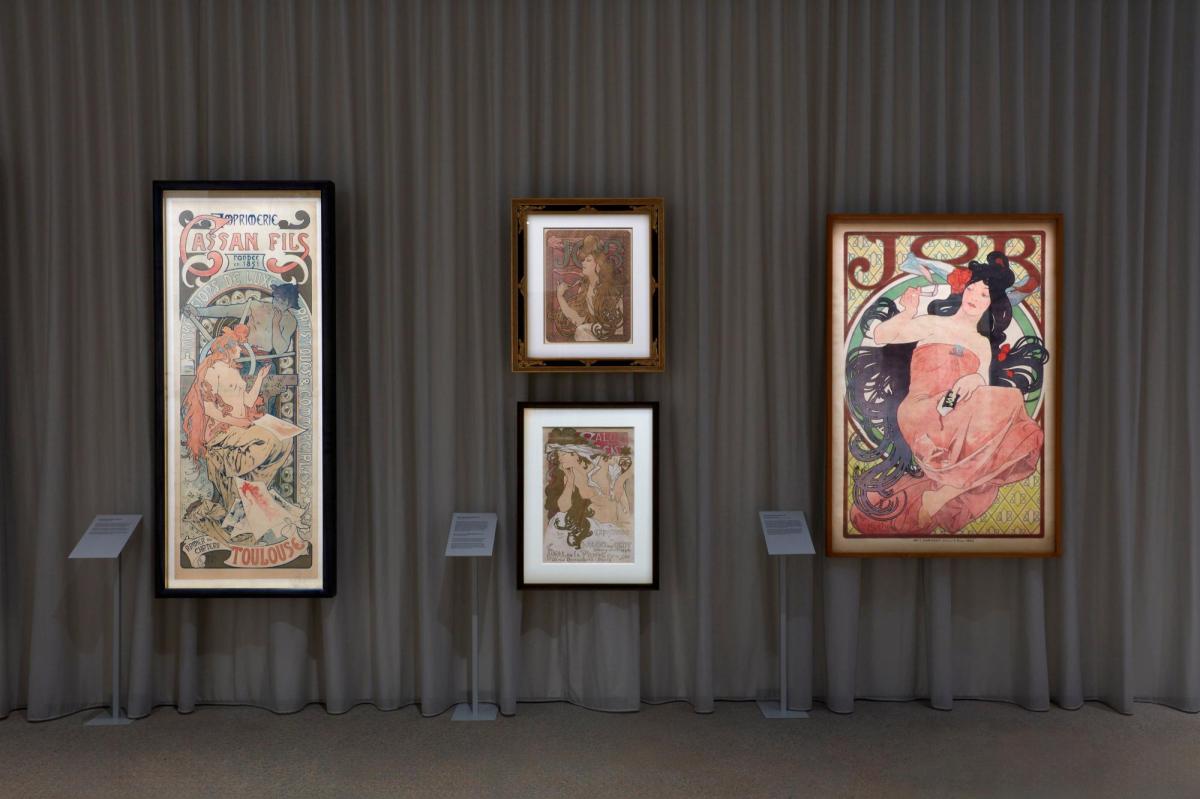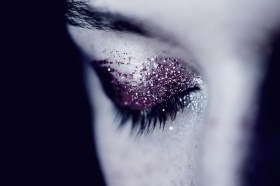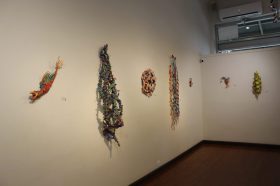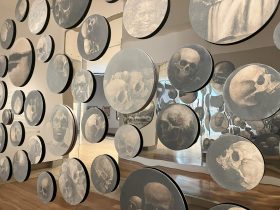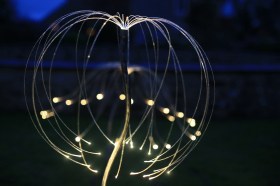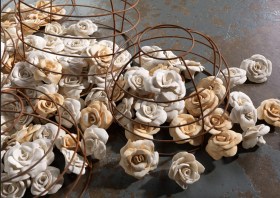The Art Gallery of New South Wales (AGNSW)’s winter blockbuster exhibition offers a fascinating insight into the extraordinarily diverse work of Czech artist Alphonse Mucha.
Mucha was born in 1860 and, like many young artists of the time, gravitated first to Munich and then Paris, where he worked as an illustrator and graphic artist. The turning point in his career came on Boxing Day, 1884, when he was commissioned to design a last-minute poster for a show by the renowned actress Sarah Bernhardt.
Inspired by hanging scrolls of Japanese art, Mucha’s poster featured a life-size Bernhardt wearing a long Grecian tunic, her head crowned with tulips and holding a palm fond, the symbolic icon of peace, in her hand. The title of the production and Bernhardt’s name were woven around the image. The actress was ecstatic, proclaiming that the posters had made her ‘immortal’, and she awarded Mucha a six-year contract to design other posters, costumes and sets for performances.
The Mucha style – euphemistically referred to as ‘swirls, curls and girls’ – became synonymous with the Art Nouveau movement. However, Mucha was also an extraordinarily talented jewellery designer, artist and sculptor.
AGNSW’s exhibition showcases Mucha’s diverse portfolio in the most comprehensive display of his work ever displayed in Australia. It features 200 works derived from the Mucha family collection, including jewellery, graphic design, sculpture and photographs.
As the Iron Curtain that separated Eastern Europe from the rest of the world in the 20th century descended, much of this work was hidden. This beautifully designed exhibition, co-curated by Tomoko Sato, curator of the Mucha Foundation, and Jackie Dunn, senior curator of exhibitions at AGNSW, offers a mesmerising revelation of the work of Mucha as an artist, philosopher and activist.
Over a series of nine different spaces on the lower level of the Gallery’s north building, the exhibition charts Mucha’s life and work – from a graphic designer and illustrator to monumental artist, philosopher and activist.
Mucha was a pioneer of the social art movement, which centred on a philosophy that believed art should be for ordinary people rather than social elites. Consequently, his designs decorated everything from biscuit tins to postage stamps. Many of his works include subtle criticism of industrialism and imperialism. In the background of an 1897 colour lithograph commissioned by Nestlé to celebrate Queen Victoria’s Diamond Jubilee, for instance, Mucha includes references to factories pumping out pollution and war.
Mucha was also a Bohemian and a Slav patriot and the exhibition includes details of stained-glass windows he created for the cathedral in Prague, patriotic posters and even a postage stamp designed for the new nation.
There are also numerous works Mucha created before and after Czechoslovakia gained independence at the end of World War I, typically featuring strong Slavic women of allegorical cultural folk tales.
One of the most striking examples is the bronze sculpture La Nature (c.1900), which features the bust of an archetypal fin-de-siècle female. The Swedish dramatist August Strindberg introduced Mucha to mysticism and La Nature represents a poignant example of how this influenced his work. The eyes of the enigmatic female are cast down, but her hair flows freely over her shoulders and she proudly wears a crown and striking bejewelled earrings.
A highlight of the exhibition is the representation of the Slavic Epic series of paintings Mucha created between 1912 and 1926. Over a series of 20 monumental canvases, Mucha evokes a cry for world peace and harmony through representations of stories from Slavic culture and history. While the original works are considered national treasures in the Czech Republic and could not be brought to Australia, the exhibition recreates them in a series of digital panels.
The installation is accompanied by a haunting original score based on the tonalities used by Slavic composers and performed by prominent Sydney musicians. The extraordinary installation (created by Andrew Yip) is interactive, with the video panels responding to movement, bringing the work to life and creating a mesmerising sense of proximity to the art and its message.
Mucha moved between Europe and the US, and was in Prague when Germany invaded at the beginning of World War II. He was pulled in by the Gestapo for questioning and held for several days. He didn’t recover from the ordeal and died shortly after.
His work has continued to influence popular culture, most notably during the 1960s and 70s when bands such as The Rolling Stones and Thin Lizzy used the Mucha style on their album covers. More recently, Japanese manga comics have revitalised his style in a new form.
Read: Performance review: The Cadela Força Trilogy – Chapter 1, RISING Festival, Malthouse
The exhibition represents another notable example of AGNSW drawing world culture to the continent. It should be on every art and history enthusiast’s to-do list this winter.
Alphonse Mucha: Spirit of Art Nouveau will be on display at Art Gallery of New South Wales until 22 September 2024.
